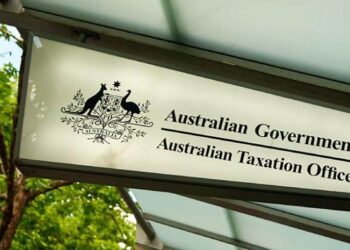The PBR (1052212242321) found in this instance that the beneficiary was a parent of the deceased and a death benefits dependant according to section 302-195 of the Income Tax Assessment Act 1997 (ITAA 1997), due to being in an interdependency relationship with the deceased under section 302-200 of the ITAA 1997.
The facts of the case were that the beneficiary is the parent of the deceased, whose estate received a death benefit payment from the deceased superannuation fund.
The beneficiary is the legal personal representative, and the only nominated beneficiary, of the estate and in support of the application to be named as the super death benefits dependant, provided several documents including a statement regarding the nature of the relationship between the deceased and the beneficiary.
These include a copy of the death certificate for the deceased, copies of the beneficiary’s licence, Medicare and pension card, and a copy of the deceased’s NDIS profile outlining her goals, support system, disability plan and the nature of the relationship between the deceased and the beneficiary.
The beneficiary also supplied a statutory declaration from the deceased’s daughter regarding the nature of the relationship between the deceased and the beneficiary and a letter from the deceased’s doctor, confirming the beneficiary and the deceased lived together for some years before the deceased’s passing.
The letter also states that it was the doctor’s understanding that the beneficiary assisted the deceased with domestic duties and personal care when she (the deceased) was unwell.
In support of the application, the beneficiary stated the deceased was unwell for a couple of years and received a formal diagnosis with a range of “medical conditions”.
The deceased suffered from seizures, anxiety and depression and used alcohol as a means of coping which became substance abuse over time. As a result, the deceased was left with physical and intellectual limitations, requiring around-the-clock care from the beneficiary.
The deceased could not complete day-to-day tasks including personal and domestic care, had to rely on others, and was heavily dependent on moving around physically, given she was not stable on her feet and would tire easily.
The beneficiary was not financially dependent on the deceased as the beneficiary received sufficient financial support through her age pension benefit, however the deceased was financially dependent on the beneficiary to an extent.
The beneficiary cared for the deceased by providing financial support, including paying for their general living expenses of food, clothes, and medical expenses, providing a home for the deceased to live in with very minimal rent to pay and very minimal money contributed towards groceries and utilities.
The beneficiary also provided domestic support, including attending to all household chores including washing, mopping, sweeping, and ironing as well as personal care and assistance, including organising and rescheduling medical appointments, and appointments.
The ruling found that an interdependency relationship as defined under section 302-200 of the ITAA 1997 existed between the deceased and the beneficiary, as all of the requirements set out in the legislation have been satisfied in this case.
It stated Division 302 of the ITAA 1997 sets out the taxation arrangements that apply to the payment of superannuation death benefits. These arrangements depend on whether the person who receives the superannuation death benefit is a dependant of the deceased and whether the amount is paid as a lump sum superannuation death benefit or a superannuation income stream death benefit.
However, as the beneficiary is the parent of the deceased, paragraphs 302-195(1)(a) and (b) of the ITAA 1997 are not applicable.
“To meet the definition of a death benefits dependant, the beneficiary must have been in an interdependency relationship with the deceased, in accordance with paragraph 302-195(1)(c) of the ITAA 1997,” the ruling stated.
“As all of the requirements in section 302-200 of the ITAA 1997 have been satisfied, the deceased and beneficiary were in an interdependency relationship in the period just before the deceased’s death. As the beneficiary was in an interdependency relationship with the deceased, the beneficiary is a death benefits dependant as defined under section 302-195 of the ITAA 1997.”


